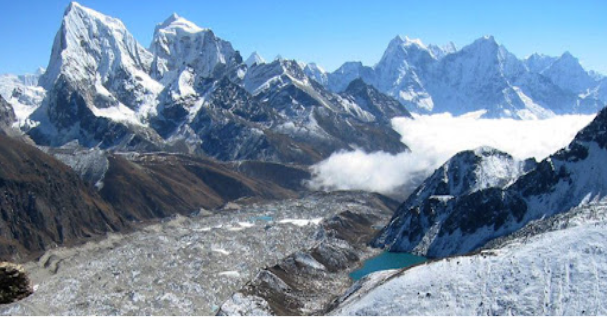The Best Time for Gokyo Chola Pass EBC Trek is one of the most stunning high-altitude journeys in the world, weaving through glacial lakes, towering peaks, and remote Sherpa villages. However, due to the trek’s challenging terrain and weather-sensitive high pass crossings, choosing the right time of year is crucial for a successful and enjoyable experience.
Here’s a detailed guide on the best seasons to trek, what to expect each month, and how to plan around weather, visibility, and trail conditions.
Ideal Seasons for the Gokyo Cho La Pass and EBC Trek
1. Spring (March to May) – The Best All-Around Season
Overview:
Spring is widely regarded as the Best Time for Gokyo Chola Pass EBC Trek for trekking to Everest Base Camp via Gokyo Lakes and Cho La Pass. The weather is relatively stable, the skies are clear, and temperatures are moderate.
Highlights:
- Rhododendrons bloom across lower altitudes, adding vibrant color to the trail.
- Gokyo Lakes shimmer under clear skies, and the panoramic view from Gokyo Ri is spectacular.
- Visibility of peaks like Everest, Lhotse, Makalu, and Cho Oyu is at its best.
- The Cho La Pass (5,420 m) is generally more accessible, with less risk of icy conditions compared to winter.
Drawbacks:
- It can get crowded, especially in April and early May.
- Accommodations may fill up quickly, so advance bookings are recommended.
2. Autumn (September to November) – Best for Clear Views and Cool Temperatures
Overview:
Autumn rivals spring as the ideal trekking season. After the monsoon, the skies clear, dust settles, and visibility improves dramatically. It’s a favorite among photographers and serious trekkers alike.
Highlights:
- Post-monsoon clarity offers breathtaking mountain views.
- The trail is dry, and the Cho La Pass crossing is safer than in winter or early spring.
- Pleasant temperatures during the day, and crisp, cool nights.
- Major festivals like Mani Rimdu in Tengboche offer cultural depth to the experience.
Drawbacks:
- Nights and mornings can be cold, especially in late November.
- Like spring, it’s a popular time, so expect moderate to high trail traffic.
Other Seasons: Can You Trek in Winter or Summer?
3. Winter (December to February) – Remote, Rugged, and Risky
Overview:
Winter treks to EBC via Cho La Pass are not recommended for most trekkers. Extreme cold, snow-covered trails, and blocked passes make the journey far more difficult.
Considerations:
- Cho La Pass may be closed due to heavy snow and ice.
- Temperatures drop well below freezing, especially at night.
- Fewer lodges remain open in remote areas like Dragnag and Dzongla.
Pros for Experienced Trekkers:
- Solitude: very few tourists.
- Crystal-clear skies on calm days.
4. Summer/Monsoon (June to August) – Wet, Slippery, and Challenging
Overview:
Summer brings the monsoon season, making it the least favorable time for this trek. The trails become slippery, flights to Lukla face frequent delays, and leeches can be a nuisance at lower altitudes.
Considerations:
- Cloud cover often obscures mountain views.
- Landslides and flight cancellations are common.
- The Cho La Pass is especially dangerous due to poor visibility and wet terrain.
However:
- Fewer crowds.
- Lush greenery in the lower valleys.
Month-by-Month Summary
| Month | Weather Condition | Trekking Suitability |
| March | Cold but dry, clear | Good |
| April | Warm, blooming trails | Excellent |
| May | Warmer, start of haze | Very Good |
| June–Aug | Rainy, poor visibility | Not Recommended |
| September | Fresh, post-monsoon | Excellent |
| October | Clear, crisp | Best |
| November | Cold but clear | Very Good |
| Dec–Feb | Snow, very cold | Risky (experienced only) |
Conclusion: When Should You Go?
The Best Time for Gokyo Chola Pass EBC Trek and Everest Base Camp route is during spring (March to May) and autumn (September to November). These months offer the perfect blend of favorable weather, trail accessibility, and breathtaking mountain views. While winter and summer treks are possible, they are recommended only for highly experienced trekkers with flexibility and proper gear.
Plan well, time it right, and you’ll experience one of the world’s most iconic trekking adventures at its finest.

